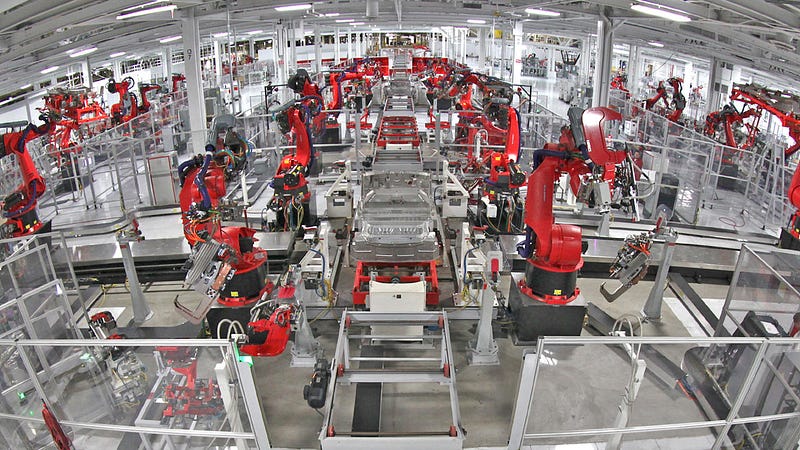Internet of Things Examples and Applications
Internet of Things Examples and Applications
- Last Updated: December 2, 2024
Calum McClelland
- Last Updated: December 2, 2024



The Internet of Things promises to completely change the way that we communicate and interact with the world around us, continuing the evolution of technology and culture as we become increasingly connected. The internet was a major step in connecting people across the globe, but now, through IoT, we take it a step further - connecting all of the "things" that touch our everyday and professional lives through sensors and cloud computing.
"Any sufficiently advanced technology is indistinguishable from magic.”
Arthur C. Clarke, Profiles of the Future
IoT promises to unlock the door to the next industrial revolution. IoT can seem like "magic" for two reasons:
- The all-encompassing nature of the concept
- Unnecessarily confusing technical explanations
My goal is to clear up the confusion with some simple Internet of Things examples and applications.

Image Credit: Tesla Motors Via Hackernoon
Increased Efficiency
“This years’ series of Internet of Things (IoT) and Industrial Internet of Things (IIoT) forecasts reflect a growing focus on driving results using sensor-based data and creating analytically rich data sets…solving complex logistics, manufacturing, services, and supply chain problems.”
Louis Columbus, Roundup Of Internet Of Things Forecasts And Market Estimates, 2016
Increasing efficiency means more output with the same input or the same output with less input. Inputs could include time, energy, money, or resources and output could be units produced or tasks accomplished.
The Internet of Things (IoT) makes sense with concrete examples. Here's how IoT improves efficiency, health/safety, and/or user experiences.
Efficiency is particularly important for industrial applications because more production at less cost means greater profit. Below are some Internet of Things examples:
Internet of Things Examples
Manufacturing Efficiency
Sensors embedded in manufacturing equipment and placed throughout a factory can help identify bottlenecks in the manufacturing process and reduce both time and waste.
Rather than standard preventative maintenance, which means performing maintenance on machines before they break, “predictive maintenance” means using advanced sensing and analytics to predict exactly when machines will need maintenance when. Because predictive maintenance means only servicing machines when they need it, this cuts total costs and the time machines spend idle while freeing up people maintenance crews for more high-level tasks.
Energy Efficiency
As people and as organizations, we can achieve significant decreases in our energy usage with IoT. Sensors monitor things like lighting, temperature, energy usage, etc. By processing that sensor data, intelligent algorithms can micromanage energy usage in real-time far more effectively than we ever could, saving money and the planet in one fell swoop. This is how Google cut 15% of its energy expenditure in its data centers.
On an individual level, things like Smart Thermostats can automatically turn off heating/cooling when no one’s home to save energy. No more forgetting to turn off the lights when leaving the room—let IoT solutions streamline your energy bill and your carbon footprint.
Agricultural efficiency
For outdoor agriculture, an example could be sensing soil moisture and taking weather into account so that smart irrigation systems only water crops when needed, reducing the amount of water usage.
For indoor agriculture, IoT allows for the monitoring and management of micro-climate conditions (humidity, temperature, light, etc.) to maximize production.
Inventory Efficiency
By placing RFID or NFC tags on individual products, the exact location of single items in a large warehouse can be shared, thus saving search time, streamlining infrastructure, and lowering labor costs.
Retail settings provide another example. By knowing exactly what’s in stock and what isn’t, a store inventory manager can order new products only when needed, or even avoid wasted inventory by predicting when customers will want certain items. This reduces the cost of keeping extra inventory in the back. Also, smart inventory management eliminates the need to manually check what’s on the shelves, reducing labor costs, and freeing up people to do what only people can do: lead teams and think creatively.
Improved Health and Safety
The Internet of Things enables heightened surveillance, monitoring, and detection, which all combine to improve health and increase safety. The one caveat is that authoritarian government could use enhanced surveillance to abuse human rights, but as the internet of things examples below will show, the benefits far outweigh the potential for abuse in the hands of a few dictators.
Internet of Things Examples:
Disaster warning
Sensors can collect critical information about the environment, allowing for early detection of environmental disasters like earthquakes, tsunamis, etc., thus saving lives.
Law enforcement
Better surveillance and tracking tools will allow authorities to detect when a crime has occurred and respond much faster, keeping citizens safer. Also, law enforcement will even be able to predict crime, stopping it from happening in the first place. However, as mentioned above, enhanced safety comes with some concerns about privacy.
Elderly care
Patient surveillance can be life-saving; automatically detecting when someone falls down or when they begin to experience a heart attack so that emergency care can be sent immediately.
Environmental quality
Sensors can also detect radiation, pathogens, and air quality so that dangerous concentrations can be identified early, allowing people to evacuate.

Image Credit: pinimg
Better Experience
“We are stuck with technology when what we really want is just stuff that works.”
Douglas Adams, The Salmon of Doubt
The Internet of Things will allow our world to increasingly shape itself to our needs and our wants, creating a better experience.
You’re stuck in traffic on your way home from work.
Knowing that you won’t have much time to cook when you get home, your car talks to your kitchen to find out dinner options. The fridge and pantry check what food you have and then the oven comes up with quick, easy recipes based on your preferences. The car asks you what you’d like and by the time you get home your oven has preheated. A voice walks you through the food prep, you put the dish in the oven, and go to pick your kids up from practice. When you get home, the oven has cooked dinner to perfection and your hungry kids dig in.
Could you lump all of these transformations under increasing "efficiency"? Maybe. But to me, this goes beyond simple efficiency.
IoT is about connecting stuff so that it just works better. As if by magic, IoT has the power to make our lives safer, more connected, more productive, and just better in general.
Originally published May 17, 2019. Updated January 29, 2020.
The Most Comprehensive IoT Newsletter for Enterprises
Showcasing the highest-quality content, resources, news, and insights from the world of the Internet of Things. Subscribe to remain informed and up-to-date.
New Podcast Episode

How Drones and Telecom Enable Aerial IoT
Related Articles





